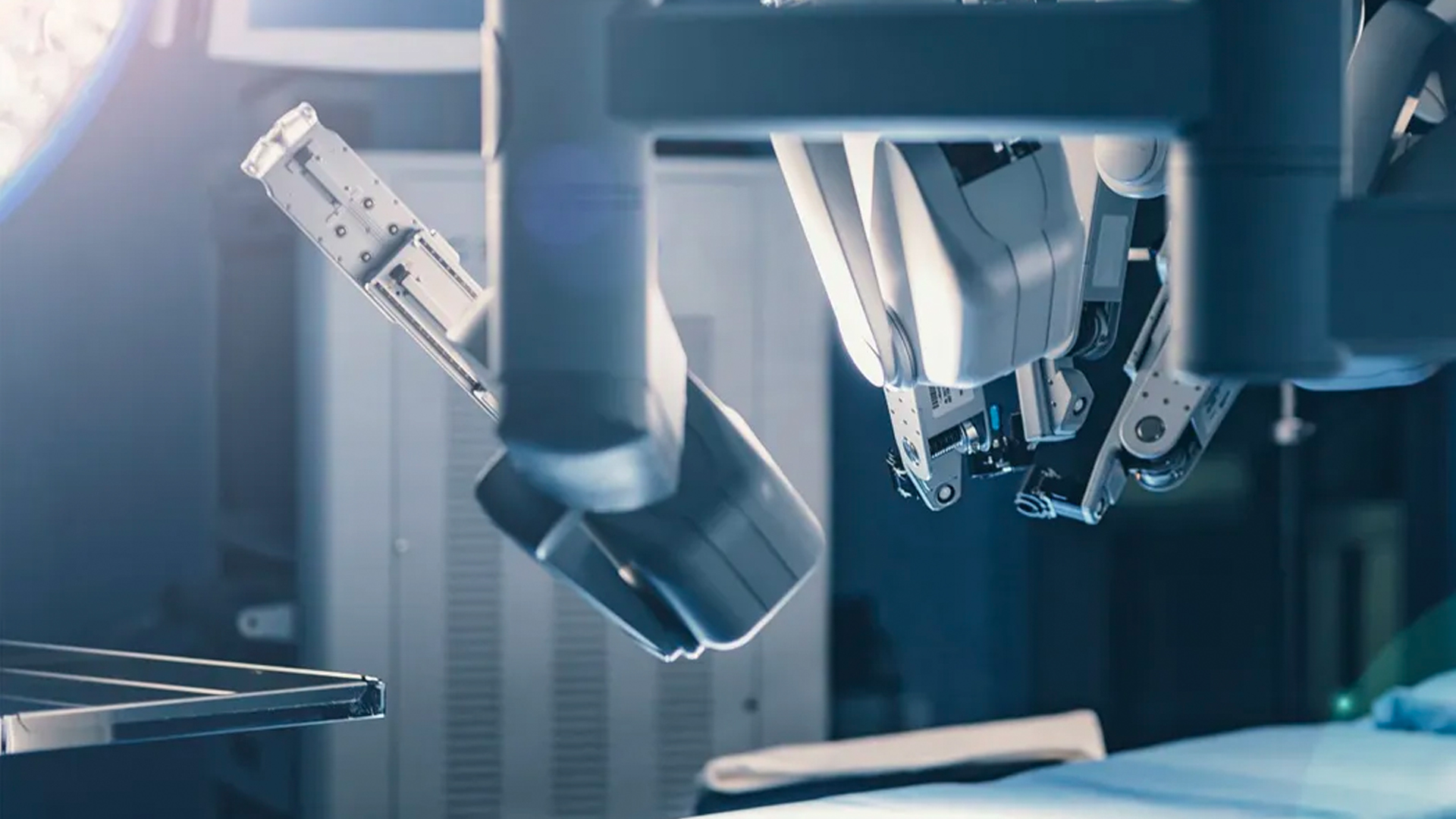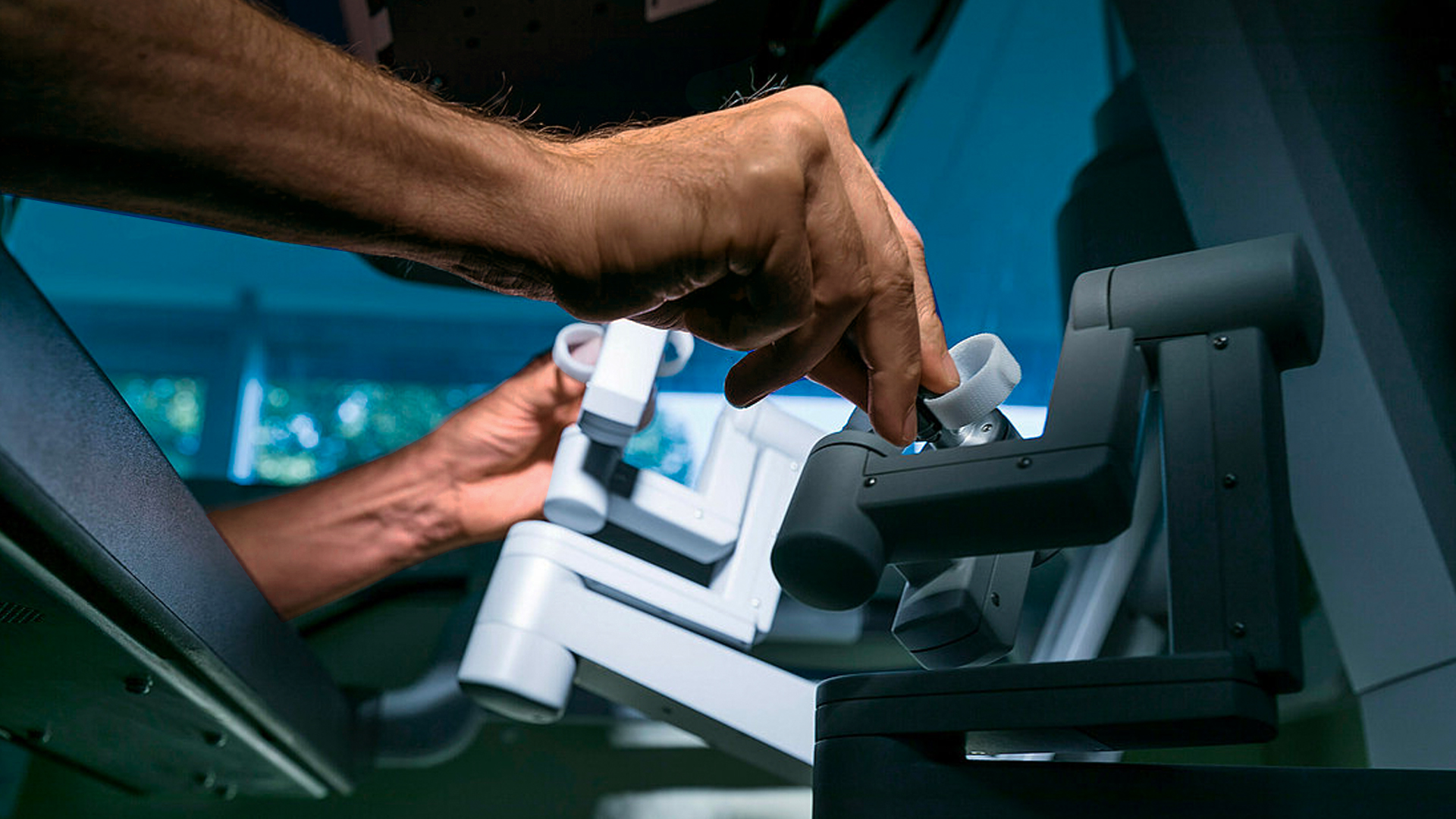
Robotic-assisted thoracic surgery (RATS) is a minimally invasive technique that employs the Da Vinci system for robotic lung surgery to assist the surgeon in treating conditions affecting the chest, such as lung cancer, mediastinal cancer, or other chest-related conditions. In the case of early-stage 1 or 2 lung cancer, robot-assisted thoracic surgery may be the primary treatment option.
The treatment method is precise and provides more flexibility than traditional surgical techniques, potentially improving patient outcomes.
However, the suitability of this procedure for a particular patient depends on various factors, including the nature of the patient’s tumour and overall health. Patients considering robot-assisted thoracic surgery should consult with a surgeon proficient in minimally invasive thoracic surgical systems to discuss the potential risks and benefits of the procedure.
As an advocate of minimally invasive surgery solutions, Dr Harish Mithiran of Neumark practices robot-assisted thoracic surgery.

Robotic-assisted surgery is an effective modality to treat thoracic conditions, including:
It’s important to note that robotic thoracic surgery is just one of many techniques, such as uniportal video-assisted thoracic surgery that may be used to treat these conditions. The best treatment modality for a particular patient will depend on your specific situation, including the size and location of the tumour or other comorbidities, your overall health, and other factors.

Robotic-assisted thoracic surgery involves using small incisions, typically only a few centimetres in size, as opposed to the large incisions required for traditional surgery.
The Da Vinci robotic lung surgery system, guided and controlled by the surgeon, enables highly precise movements for complex surgical procedures, particularly beneficial in the delicate incisions required in thoracic surgery. Additionally, the robot provides the surgeon with a high-resolution 3D view of the operating area, improving visualisation and navigation at the surgical site. This minimises disruption to surrounding tissue and reduces patient discomfort.
Simply put, our surgeons perform robotic-assisted surgery to extend the capabilities of their eyes and hands to improve their range of motion through technological advances, which leads to improved patient outcomes.
Robotic lung surgery is often performed on an outpatient basis, allowing the patient to return home the same day and potentially hasten recovery. In some cases, an overnight hospital stay may be required for more extensive procedures.
Robotic-assisted thoracic surgery can offer several potential benefits compared to traditional surgical techniques, such as a smaller incision, improved precision, and enhanced visualisation of the surgical site. These advantages may result in less blood loss, fewer complications, and a faster recovery for the patient.
As with any surgical procedure, there are some potential risks and complications associated with the Da Vinci surgical system for thoracic operations. Your surgeon will discuss the risks with you prior to the operation. However, the risks of complications are generally lower with robotic-assisted surgery compared to traditional surgery due to the smaller incisions, and the greater precision of the procedure.
The risks and benefits of robotic-assisted thoracic surgery will depend on the specific situation and the patient’s needs. It is important for patients to discuss the potential risks and benefits of this type of surgery with a thoracic surgeon well-trained and experienced with the minimally-invasive procedure like Dr Mithiran at Neumark before making a decision.
The cost of Da Vinci robotic surgery in Singapore can vary depending on a number of factors, such as the specific type of surgery being performed, the location of the procedure, and the overall health of the patient. It is important to note that the Da Vinci robotic surgery cost may be covered by insurance in some cases.
Patients should check with their insurance provider to determine their coverage for this type of surgery (see insurance panel list).
Robotic thoracic surgery recovery time will vary depending on the specific type of surgery that is performed and the individual patient’s overall health. In general, patients who undergo robotic-assisted thoracic surgery may have a shorter hospital stay and faster recovery time compared to traditional open surgery. They may also experience less pain and discomfort during the recovery process.
Patients who undergo robotic lung surgery may experience less pain and discomfort compared to traditional open surgery due to smaller incisions and reduced disruption to surrounding tissue. Pain levels vary, but most patients experience moderate discomfort that gradually improves over days to weeks. Acute pain after robotic lung surgery usually subsides within 1-2 weeks, though some patients may experience lingering discomfort for several weeks. Some pain and discomfort are expected after any surgery, and patients should discuss pain management with their surgeon and follow instructions for pain relief. Patients must communicate with their healthcare team about their pain levels and any concerns they may have throughout recovery.
Robotic-assisted thoracic surgery uses a surgical robot controlled by a surgeon, equipped with instruments and a camera inserted through small incisions, while uniportal VATS involves a single incision and long, thin instruments with a camera. Both techniques offer minimally-invasive surgery benefits such as smaller incisions and faster recovery compared to open surgery. The specific technique used depends on the patient’s needs and the condition being treated.
DISCLAIMER: The information provided on this website is for general informational purposes only and is not intended as a substitute for professional medical advice, diagnosis, or treatment. The use of this website does not create a doctor-patient relationship and no medical advice should be inferred or assumed. It is the user’s sole responsibility to seek the advice of their healthcare professionals for any medical concerns they may have and the user should not disregard, or delay, prompt medical advice for any such condition.
Read our latest insights on lung diseases and chest conditions, including prevention tactics, treatments, and more.
Access the latest advice as well as full support throughout your treatment, and during after-care.
Learn how to refer a patient or to joining our physician network of leading providers in Singapore and abroad.
Main Surgery Centre
6 Napier Rd
#02-09 Gleneagles Medical Centre
Singapore 258499
820 Thomson Road
#06-07 Mount Alvernia Hospital Medical Centre A
Singapore 574623
Neumark Lung & Chest Surgery Centre benefits from the expertise of a multidisciplinary surgical team led by Dr Harish Mithiran, a senior consulting thoracic surgeon at Gleneagles Hospital.
With access to leading minimally-invasive treatment modalities for lung disease and chest conditions, our specialists in Singapore work to achieve the best possible outcomes for lung disease. Our foremost priority is to treat your condition as effectively as possible with world-class care.
6 Napier Road
#02-09 Gleneagles Medical Centre
Singapore 258499
820 Thomson Road
#06-07 Medical Centre A
Singapore 574623
© 2025 Neumark Lung & Chest Surgery Centre Pte. Ltd. | UEN 202136971R
Gleneagles Medical Centre
6 Napier Road
#02-09 Gleneagles Medical Centre
Singapore 258499
Mount Alvernia Hospital
820 Thomson Road
#06-07 Medical Centre A
Singapore 574623